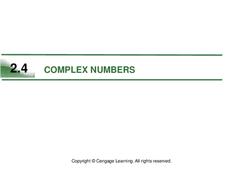University of Texas
Free-Body Diagram
Preparing for an AP test is about more than bubble sheets and memorization. The two activities in this resource require a direct application of skills learned throughout an AP Physics course.
University of Texas
Understanding Migration
Human migration—often the result of push and pull factors—sometimes has dramatic outcomes for both those leaving their homelands and the host countries. Using a variety of case studies, learners consider those issues. Then, by completing...
University of Texas
Scarcity
How can having too little of something impact your life? Scholars investigate the concept of scarcity in their own lives and in the overall picture of the economy. Brainstorming activities as well as student-parent work bring to light...
University of Texas
Lives of Stars
Stars exist from a few million years to over 10 billion years, depending on their mass. Scholars perform a play acting as stars to learn about their different life cycles. They develop an understanding of many of the fundamental concepts...
University of Texas
Spanish Video For Language Learning
This video discusses family relationships at an introductory level. Some English is uttered by the Spanish speaker as well. The video will require Adobe Flash Player in order to play.
University of Texas
Multi-wavelength Astronomy
Explore a land far, far away with a well-designed lesson that examines electromagnetic imaging as a way to obtain information about galactic structures. Learners begin to see the importance of looking beyond the visual spectrum to...
University of Texas
Matter and the Periodic Table Chemical Families and Periodic Trends
Is assembling the periodic table as simple as Tetris? Scholars arrange colored cards into a logical order and then make connections to the arrangement of the periodic table. Hands-on activities include adding trend arrows and analyzing...
University of Texas
Observing the Moon
Why does it look like there is a man on the moon? Why does the moon look different every night? These are the focus questions of a lesson that prompts class members to observe and record the nightly changes of Earth's natural...
University of Texas
A Library of Parent Functions
Don't think this lesson is for Mom and Dad; parent functions are all for your high schoolers. Flip through a presentation with a focus slide on each type of graph and its characteristics. Some examples are included but the...
University of Texas
Essential Reading Strategies for the Struggling Reader
Beneficial for beginning readers, struggling readers, and those in need of review, a set of language arts activities is a great addition to any foundational reading unit. Focusing on phonological awareness, fluency, instructional...
University of Texas
Complex Numbers
Are complex numbers and binomials similar? This stack of slides provides an introduction to complex numbers and shows how to operate with them. The worked examples show a connection between operating with binomials and operating with...
University of Texas
Alphabetic Understanding, Phonics, and Spelling
Have your youngsters reading in no time with with collection of literacy activities and lessons. Starting with a basic understanding of the alphabet, this unit progressively builds students' phonemic awareness and ability to decode...
University of Texas
Let's Go to Argentina/¡Vámonos a Argentina!
Give your young Spanish language learners a lesson in culture! Focus on learning Spanish though exploring Argentinian culture. Pupils interact with maps, fill out travel journals, discuss time and food, learn and practice new vocabulary...
University of Texas
Heat Transfer and Energy Balance
Learn about conduction, convection, and radiation with an illustrative presentation. It includes slides about atmospheric movement and how it affects the climate, solar radiation, and how latent heat can form storms.
University of Texas
The Origin of Bone Names
The rib bone's connected to the xiphiod! But, what two Greek words are related to xiphiod? And what do certain Latin terms mean? Build understanding of the bones in the human body as well as Latin and Greek vocabulary with a scavenger...
University of Texas
What Are Calories?
What are calories, and how do calorie needs differ from person to person? Here is a worksheet that briefly explains how calories measure the energy supplied by food, as well as suggests the amount of food an individual should eat per day.
University of Texas
Practice Questions for Chapter 5, Part 1
A four-page assignment contains 28 stereochemistry problems for your advanced placement chemists. Topics addressed include asymmetric carbons, enantiomers and diastereomers, meso compounds,and chiral and achiral molecules. The...
University of Texas
Inside Mathematics: Carol's Number [Pdf]
This task challenges a student to demonstrate understanding of concepts involved in place value.
University of Texas
Inside Mathematics: Don's Shapes [Pdf]
This task challenges a student to demonstrate understanding of the attributes of two-dimensional shapes.
University of Texas
Inside Mathematics: Half and Half [Pdf]
This task challenges a student to demonstrate understanding of one-half in a geometric context.
University of Texas
Inside Mathematics: High Horse [Pdf]
This task challenges a student to demonstrate understanding of measurement.
University of Texas
Inside Mathematics: Incredible Equations [Pdf]
This task challenges a student to demonstrate understanding of concepts involved in addition and subtraction.
University of Texas
Inside Mathematics: Our Pets [Pdf]
This task challenges a student to demonstrate understanding of concepts involved in representing and interpreting data.
University of Texas
Inside Mathematics: Pam's Shopping Trip [Pdf]
This task challenges a student to demonstrate understanding of equal groups of objects to gain a foundation for multiplication.



















![Inside Mathematics: Carol's Number [Pdf] Lesson Plan Inside Mathematics: Carol's Number [Pdf] Lesson Plan](https://d15y2dacu3jp90.cloudfront.net/images/attachment_defaults/resource/large/FPO-knovation.png)